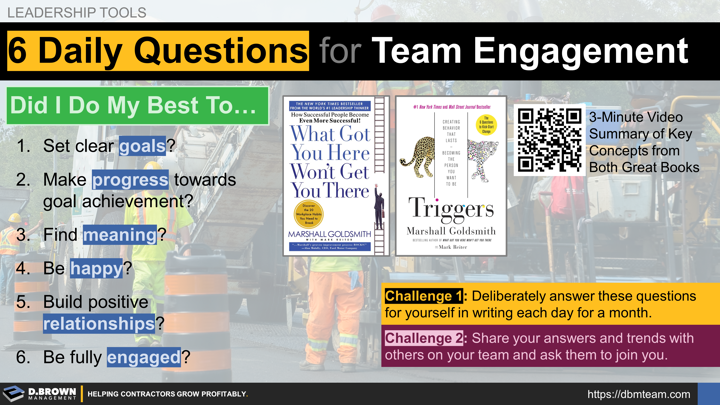At the business level the need to keep team members engaged to both attract and retain talent is getting more difficult with labor shortages and generational differences.
Marshall Goldsmith explores why the questions often asked in employee satisfaction surveys don’t actually improve engagement. What it comes down to is the shift in locus of control from external to internal.
The questions often asked drive people to focus externally on what is happening to them and what others in the company can do for them. This often leads to lower engagement rather than improvements. He outlines a method of questioning and six daily questions that shift the locus of control internally leading to higher engagement and performance.
Did I do my best to...
- Set clear goals?
- Make progress toward goal achievement?
- Find meaning?
- Be happy?
- Build positive relationships?
- Be fully engaged?
Challenge 1: Deliberately answer these questions for yourself in writing each day for a month.
Challenge 2: Share your answers and trends with others on your team, even those things that are difficult to share. Then ask them to join you on a one-month challenge for themselves.
Books:
Resources:

